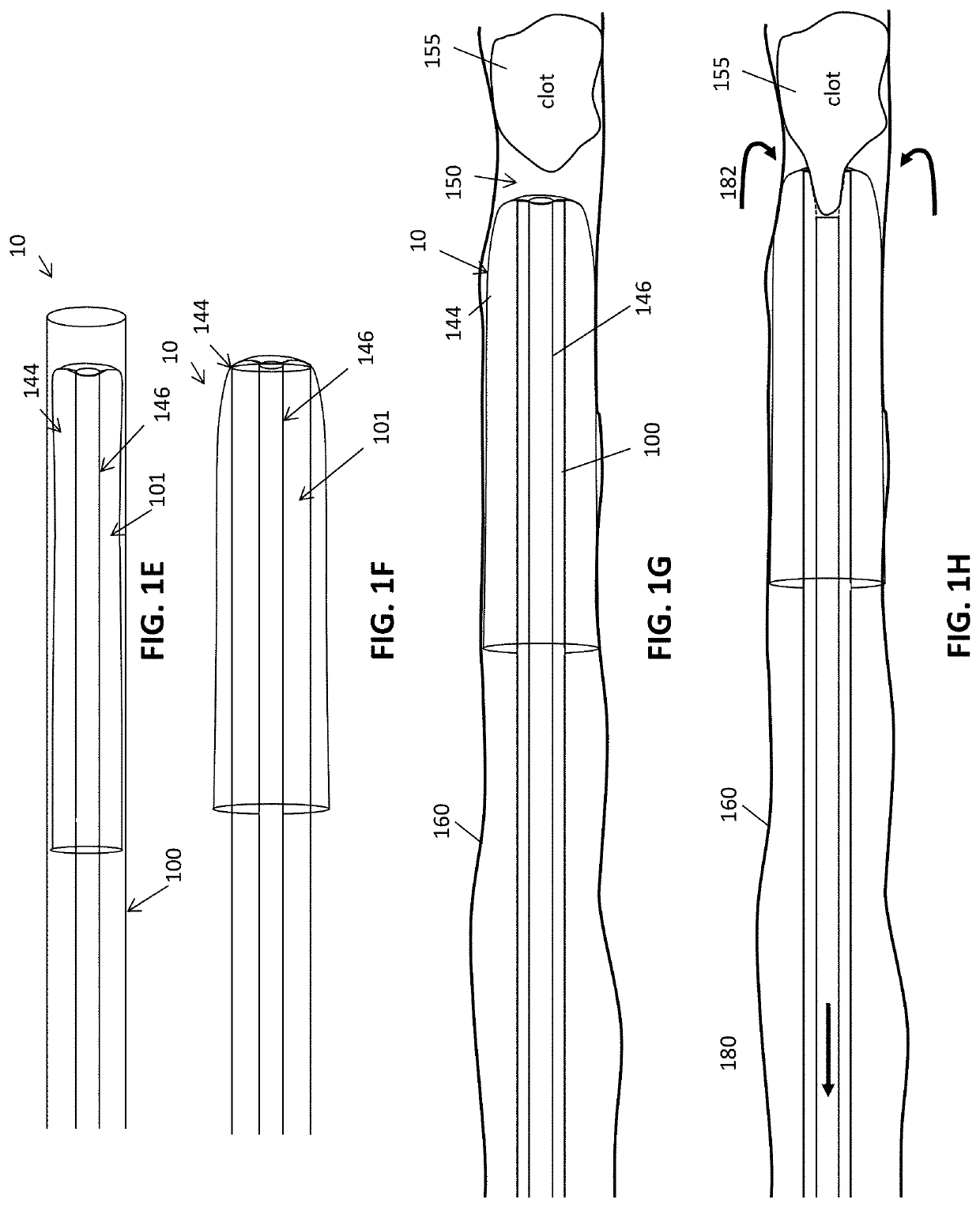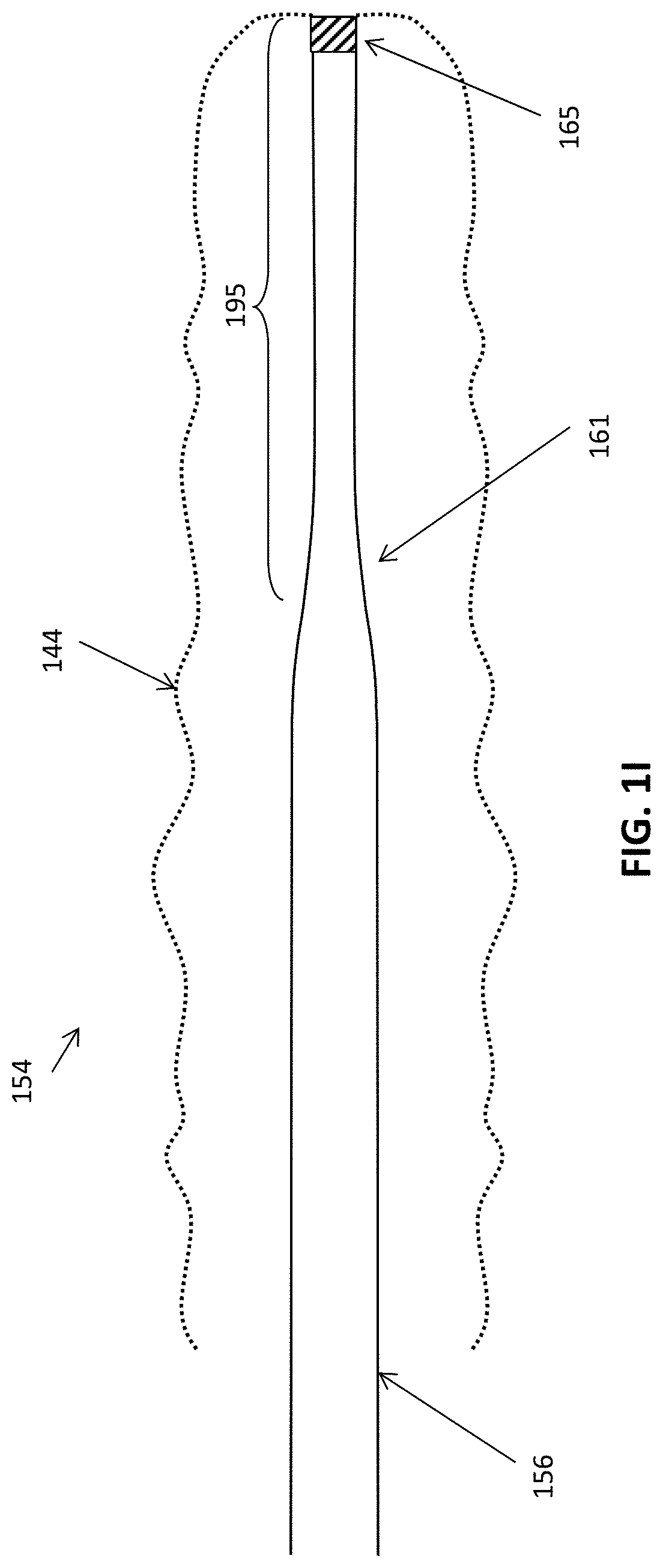Inverting thrombectomy apparatuses and methods
a thrombus and thrombosis technology, applied in the mechanical field, can solve the problems of insufficient or irregular blood flow, insufficient blood flow through blood vessels, and shortage of oxygen-carrying red blood cells, and achieve the effects of preventing jamming, preventing jamming, and increasing resistan
- Summary
- Abstract
- Description
- Claims
- Application Information
AI Technical Summary
Benefits of technology
Problems solved by technology
Method used
Image
Examples
Embodiment Construction
[0056]In general, described herein are mechanical thrombectomy apparatuses having an inverting flexible tractor tube that is configured to be deployed in situ (e.g., within a catheter) without jamming. Any of these apparatuses may include an elongate elongate inversion support catheter over which the flexible tractor tube inverts at the distal end. In the deployment configuration, the flexible tractor tube may comprise a flexible tube that doubles back (e.g., inverts) over the distal end opening of the elongate inverting support catheter so that the tractor tube extends into the opening of the elongate inverting support catheter when the tractor tube is pulled proximally. The tractor tube may be attached at one end to an elongate puller. Pulling the elongate puller proximally will roll and invert the tractor over the distal end opening of the elongate inverting support catheter which may capture a clot and pull it into the elongate inversion support catheter.
[0057]Any of the apparat...
PUM
 Login to View More
Login to View More Abstract
Description
Claims
Application Information
 Login to View More
Login to View More - R&D
- Intellectual Property
- Life Sciences
- Materials
- Tech Scout
- Unparalleled Data Quality
- Higher Quality Content
- 60% Fewer Hallucinations
Browse by: Latest US Patents, China's latest patents, Technical Efficacy Thesaurus, Application Domain, Technology Topic, Popular Technical Reports.
© 2025 PatSnap. All rights reserved.Legal|Privacy policy|Modern Slavery Act Transparency Statement|Sitemap|About US| Contact US: help@patsnap.com



